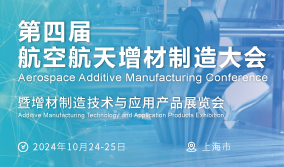光谱学与光谱分析, 2009, 29 (7): 1793, 网络出版: 2010-05-26
一种基于流形学习的近红外光谱分析建模方法
A New Algorithm for NIR Modeling Based on Manifold Learning
近红外光谱 流形学习 局部线性嵌入 局部加权回归 Near infrared spectra Manifold learning Locally linear embedding Locally weighted regression
摘要
近红外光谱分析的重要内容之一是基于校正样品集建立光谱和化学成分或类别之间的回归模型。 流形学习是一类新的机器学习方法, 它能够揭示出复杂数据的本质维数, 提取最重要的特征信息, 并用于建立回归或分类模型。 文章以近红外光谱为研究对象, 针对近红外光谱数据维数高、 谱带归属难以确定等特点, 基于流形学习中局部线性嵌入(LLE)算法的思想, 提出了一种最小二乘局部加权回归(LS-LWR)建模方法。 最后, 利用各种浓度葡萄糖溶液的近红外光谱, 对该方法进行了验证。 同时建立主成份回归(PCR)和偏最小二乘回归(PLSR)模型, 通过计算预测标准偏差(SEP)与LS-LWR模型进行比较。 实验结果表明, LS-LWR模型有更好的预测效果, 而且具有模型简单、 稳定性好和计算省时等优点。
Abstract
Manifold learning is a new kind of algorithm originating from the field of machine learning to find the intrinsic dimensionality of numerous and complex data and to extract most important information from the raw data to develop a regression or classification model. The basic assumption of the manifold learning is that the high-dimensional data measured from the same object using some devices must reside on a manifold with much lower dimensions determined by a few properties of the object. While NIR spectra are characterized by their high dimensions and complicated band assignment, the authors may assume that the NIR spectra of the same kind of substances with different chemical concentrations should reside on a manifold with much lower dimensions determined by the concentrations according to the above assumption. As one of the best known algorithms of manifold learning, locally linear embedding (LLE) further assumes that the underlying manifold is locally linear. So, every data point in the manifold should be a linear combination of its neighbors. Based on the above assumptions, the present paper proposes a new algorithm named least square locally weighted regression (LS-LWR), which is a kind of LWR with weights determined by the least squares instead of a predefined function. Then, the NIR spectra of glucose solutions with various concentrations are measured using a NIR spectrometer and LS-LWR is verified by predicting the concentrations of glucose solutions quantitatively. Compared with the existing algorithms such as principal component regression (PCR) and partial least squares regression (PLSR), the LS-LWR has better predictability measured by the standard error of prediction (SEP) and generates an elegant model with good stability and efficiency.
洪明坚, 温志渝, 张小洪, 温泉. 一种基于流形学习的近红外光谱分析建模方法[J]. 光谱学与光谱分析, 2009, 29(7): 1793. HONG Ming-jian, WEN Zhi-yu, ZHANG Xiao-hong, WEN Quan. A New Algorithm for NIR Modeling Based on Manifold Learning[J]. Spectroscopy and Spectral Analysis, 2009, 29(7): 1793.





